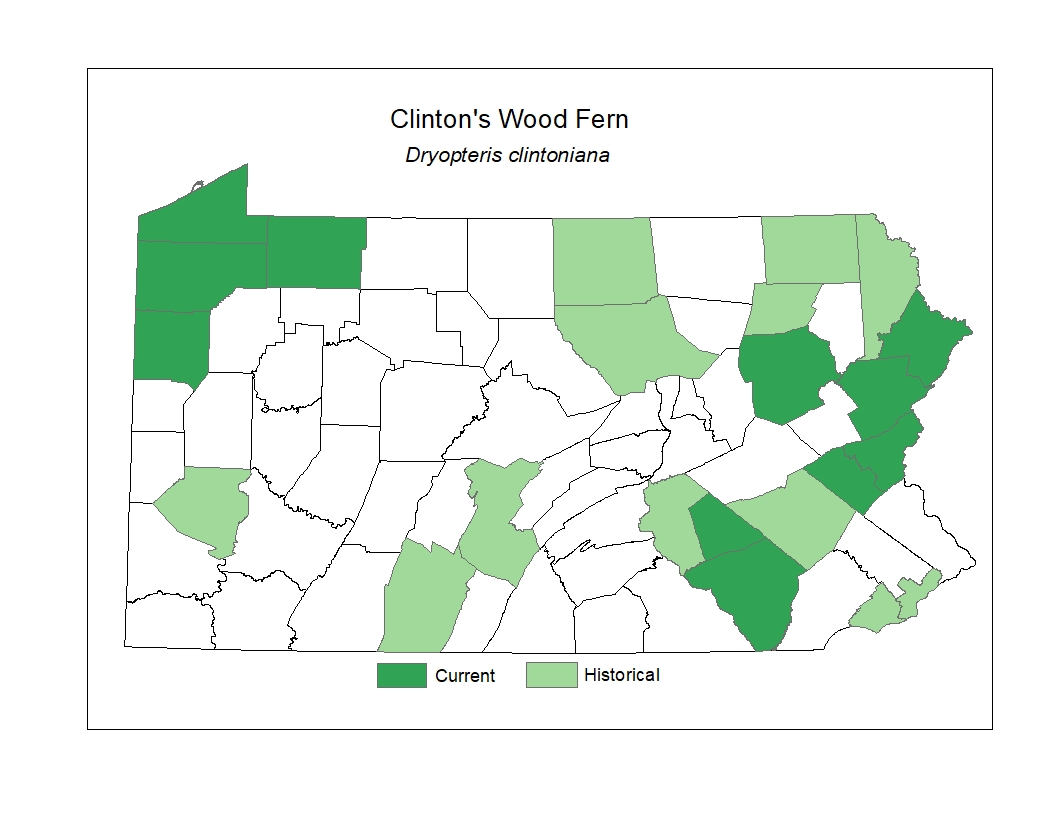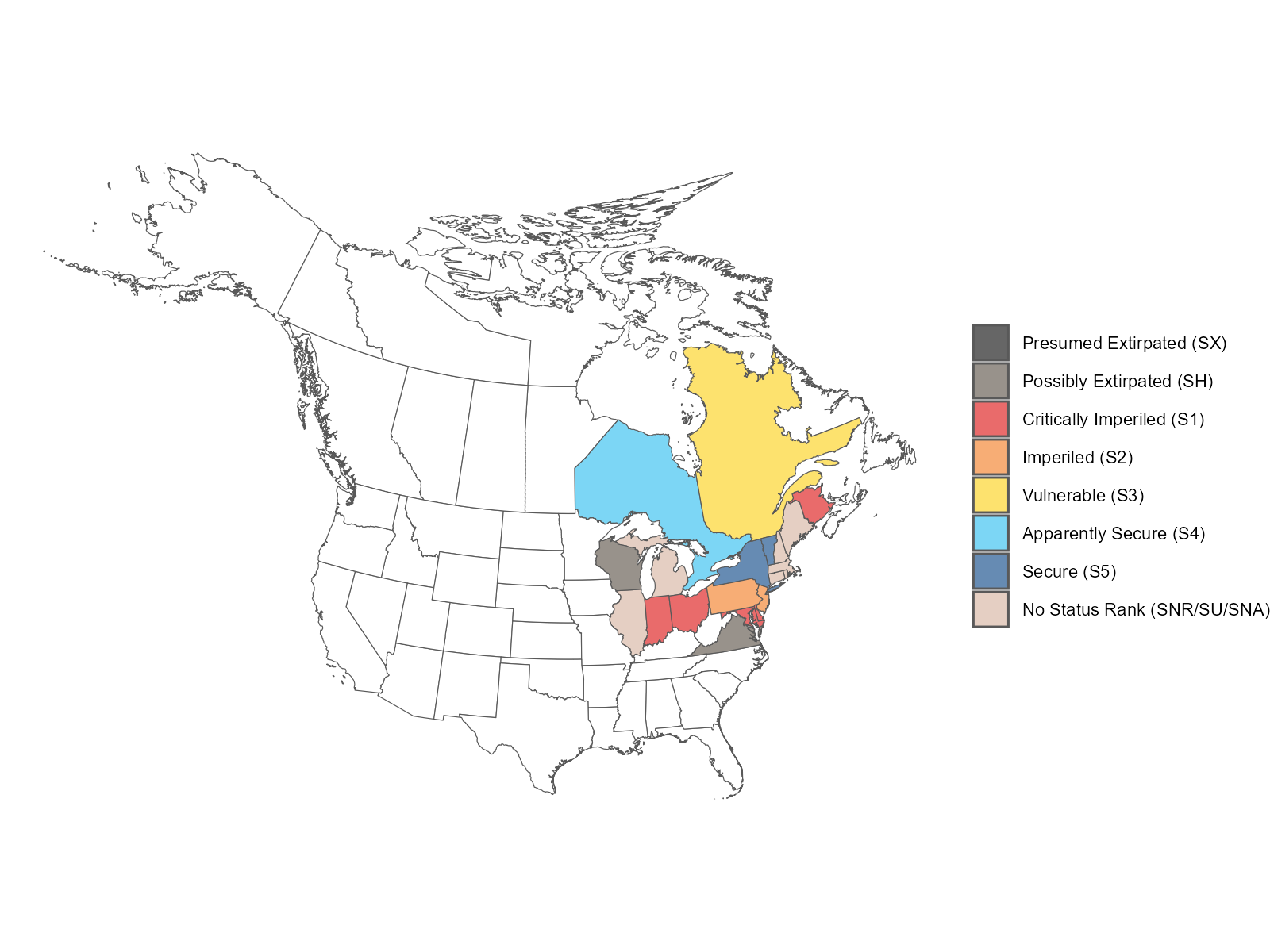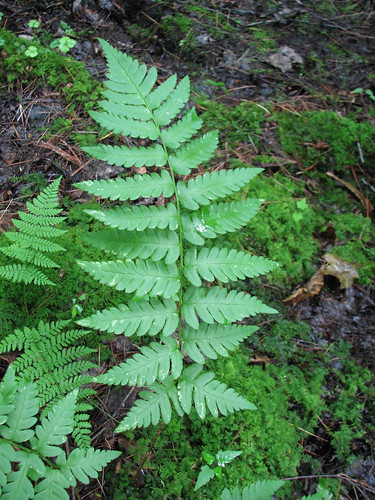 Species Factsheets
Species Factsheets
Dryopteris clintoniana
Clinton's Wood Fern
State Status: N
PBS Status: Pennsylvania Threatened (PT)
Federal Status:
Global Rank: G5
![]() rank interpretation
rank interpretation
State Rank: S2
Did You Know?
This species can be distinguished because they are not fullly twisted at right angles to the blade (thus becoming more or less parallel to the ground on an erect frond).
Description
Clinton's wood fern (Dryopteris clintoniana) grows from 45cm to 1m tall. Fertile fronds, which have the reproductive spores on the underside, are deciduous and erect. Sterile fronds are smaller, evergreen, and mostly prostrate on the ground. The leaves are divided into leaflets, or pinnae, which are themselves lobed or toothed. The lowest pinnae are triangular in shape and about twice as long as wide. The fertile pinnae are not turned at an angle to the plane of the overall leaf, unlike the more common crested wood fern (Dryopteris cristata).
Rank Justification
Imperiled in the nation or state because of rarity due to very restricted range, very few populations (often 20 or fewer), steep declines, or other factors making it very vulnerable to extirpation from the nation or state.
PABS
The PA Biological Survey (PABS) considers Clinton's wood fern to be a species of special concern, based on the few occurrences that have been recently confirmed and its wetland habitat. It does not have a PA legal rarity status, but has been assigned a suggested rarity status of Threatened by PABS. About fifteen populations, mostly of them in the northwestern region, are currently known from the state.
Habitat
It grows in swampy woodlands.
Survey Dates
Deciduous; survey summer - fall
Distribution
In Pennsylvania, it has been documented historically in numerous widespread counties.

Management
The viability of the known populations of Clinton's wood fern and its habitat may be enhanced by creating buffers around wetlands, controlling invasive species, and protecting the natural hydrology surrounding wetlands.
Conservation Status Map

NatureServe. 2017. NatureServe Explorer: An online encyclopedia of life [web application]. Version 7.1. NatureServe, Arlington, Virginia. Available https://explorer.natureserve.org.
https://dnr.wi.gov/topic/EndangeredResources/Plants.asp?mode=detail&SpecCode=PPDRY0A070
- NatureServe. 2018. NatureServe Explorer: An online encyclopedia of life [web application]. Version 7.1. NatureServe, Arlington, Virginia. Available at https://www.natureserve.org/explorer
- Pennsylvania Natural Heritage Program. 2018.
- Rhoads, A.F. and W.M. Klein, Jr. 1993. The Vascular Flora of Pennsylvania. American Philosophical Society, Philadelphia, Pennsylvania. Rhoads, A.F. and T.A. Block.
- 2007. The Plants of Pennsylvania: An Illustrated Manual. 2nd edition. University of Pennsylvania Press, Philadelphia, Pennsylvania.







